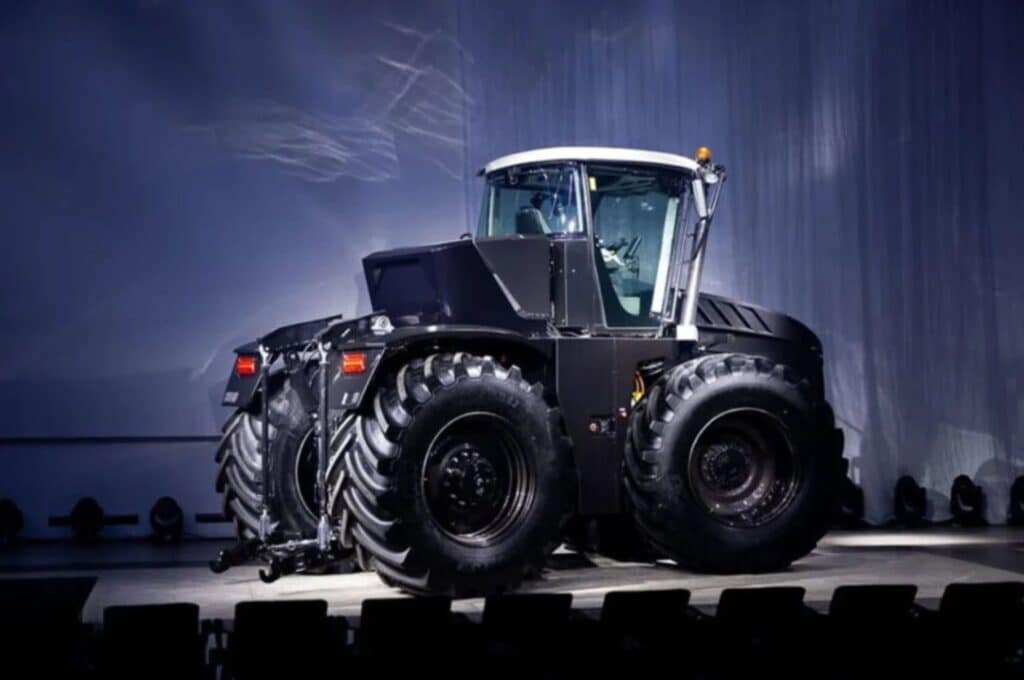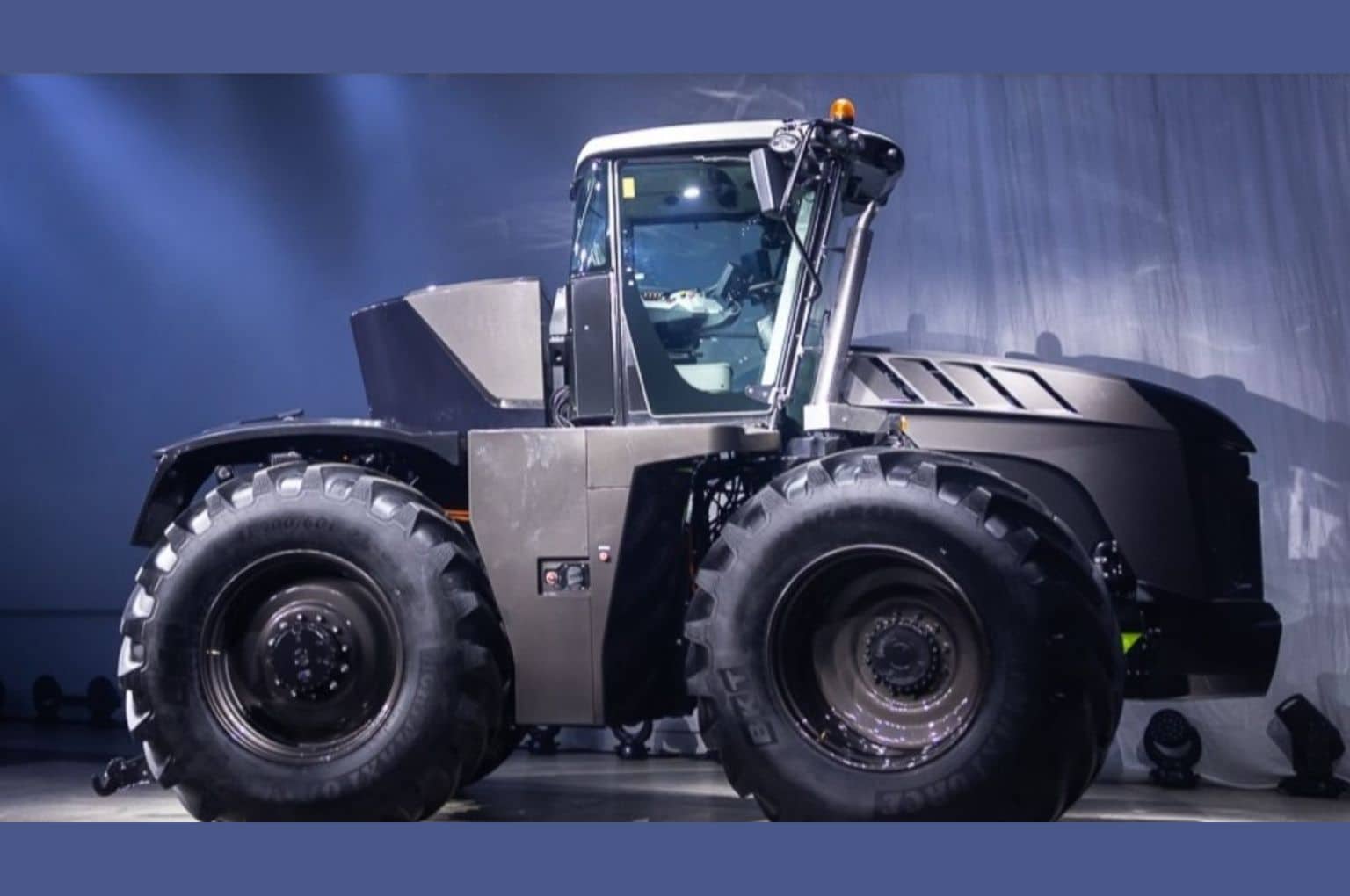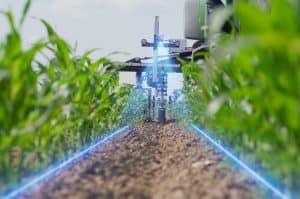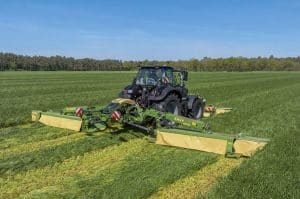The Auga M1 hybrid tractor went into production. Developed and assembled in Lithuania, the tractor is powered by biomethane and electric drives and is able to operate continuously for up to 12 hours. Compared to diesel-powered tractors, the Auga M1 reduces carbon dioxide emissions by up to 100 tonnes a year, according to Auga group.
“Agriculture is responsible for 20% of global emissions, and there have been no real solutions for reducing pollution in this sector. Auga group took the initiative several years ago to develop technologies that could enable a breakthrough in this area and let to farmers work more sustainably and to consumers choose food with no cost to nature. A year ago, we introduced a prototype of a hybrid tractor and undertook a series of technology tests which allowed us to improve that conceptual model. Today, a year later, we have the result that we promised everyone − the new version of the AUGA M1. The tractors from this first production batch will start their work on farms already in 2023”, says Kęstutis Juščius, CEO of Auga group.
According to Juščius, Auga group received proposals to manufacture the first batch of tractors not only for Lithuania, but for foreign manufacturers as well. Auga group however, ensured that this technology from Lithuania, should be assembled in this country. As a result, Auga group chose the Rokiškis Machine Factory for this first production batch. Rokiškis has many years of experience in the production of agricultural machinery.
Differences between concept and production model
During tests, Auga group engineers found ways to reduce energy losses and boost the overall efficiency of the electric drive. They also managed to lighten the tractor’s construction, resulting in lower energy consumption and less pressure on the soil during operation.
The first production batch consists of three tractors. Each includes different components. Serial production will use a combination of the technological solutions that showed the best results over this year’s production tests. The factory version of the Auga M1 hybrid tractor incorporates components from world-renowned manufacturers, such as a Ford internal combustion engine and a Claas cab.
Auga group also updated the design of the M1. According to Kęstutis Juščius, this version of tractor’s design will be the basis for further production.
“In creating the prototype, we focused on developing the technology without paying much attention to the design. Now we are presenting the appearance of the future serial production model. The colour of the new tractor is anthracite brown. Anthracite is the world’s oldest coal, while brown is the colour of naturally fertile earth. With the help of all the technologies we develop, we will be storing carbon in the soil in order to reduce the amount in the atmosphere. And as we work sustainably, the land will become more fertile,” the CEO of Auga group says.
Unique solutions
Developed by Lithuanian engineers, the Auga M1 is unique for its solutions to problems that the world’s largest agricultural machinery manufacturers have not managed to solve – achieving long hours of operation and convenient refueling.
“To date, gas-powered tractors that have been developed around the world have only been able to work up to 4 hours at a time in the field, as the gas cylinders did not physically fit into the tractor’s structure. The design by our engineers allows the tractor to accommodate larger biomethane gas cylinders. The second obstacle to the spread of biomethane-powered tractors is the underdeveloped biomethane refueling station infrastructure. We’ve solved this problem by offering a quick and convenient gas cartridge replacement, which is filled at the biomethane plant, not on the tractor, and delivered to each farm. This will eliminate the need for biomethane refuelling stations on farms” says Kęstutis Juščius.
The Auga M1 tractor uses a hybrid biomethane-electric fuel system. During the operation of the tractor, an internal combustion engine powered by biomethane, generates energy and transmits it directly to electric motors that rotate the wheels.
Under normal conditions which do not require high power, the tractor accumulates the generated energy reserve in its batteries. The system does not waste energy under low-load conditions, uses a relatively small but efficient engine, and is capable of producing enormous power when needed.
Future plans
According to Juščius, the aim for the new tractors is to let these be used not just by Lithuanian farmers, but also by farmers around the world. Moreover, the objective is that the operating costs of the Auga M1 will be similar to diesel-powered tractors.
The total investment to date to develop the conceptual model of the Auga M1 tractor and to produce the first batch, counts more than €3 million. Since the launch of the prototype, the company has doubled the size of its engineering team and plans to hire even more engineering personnel.
After the technological tests in the fields, AUGA group will aim to start mass production as soon as possible this year.









